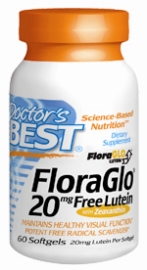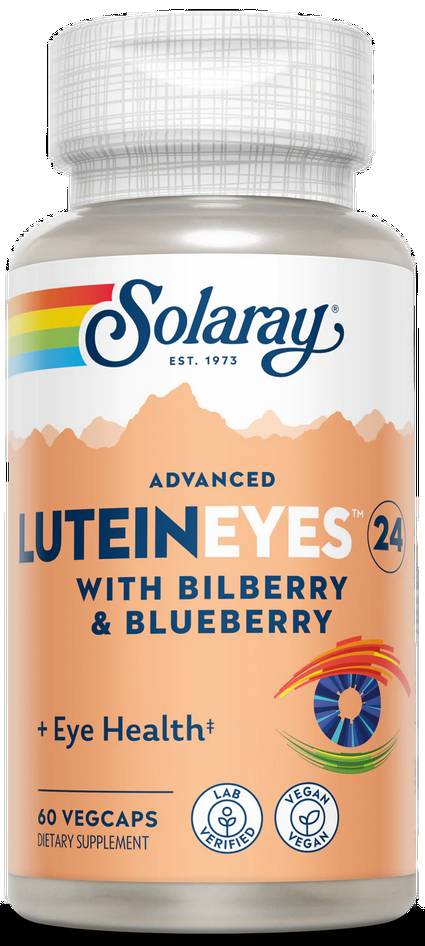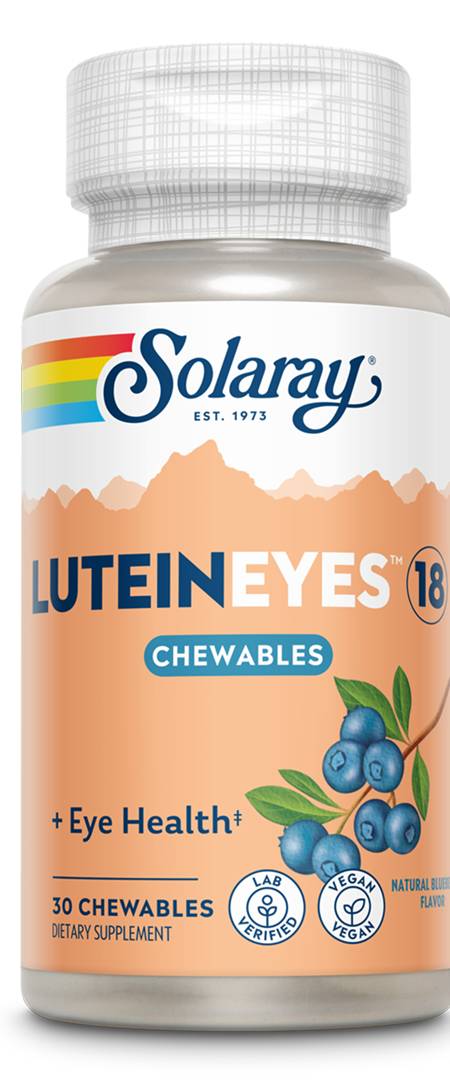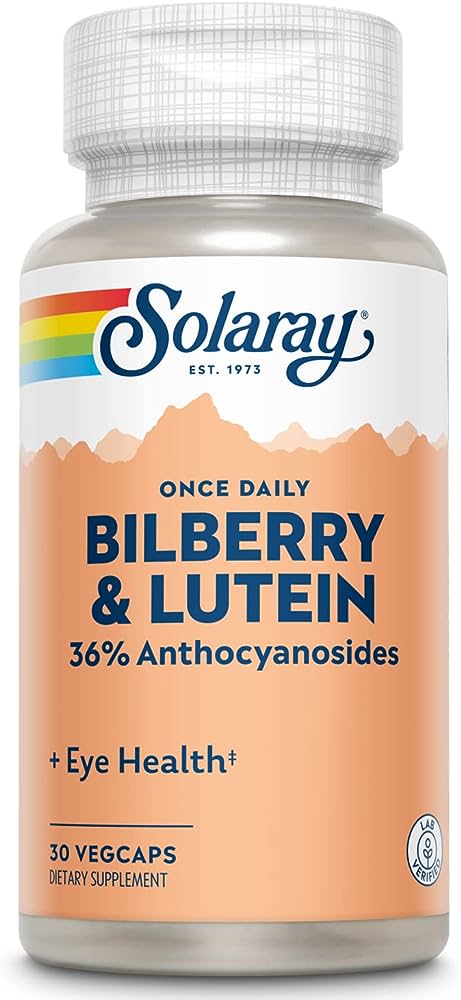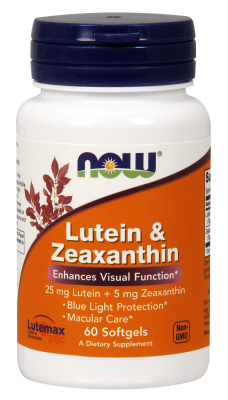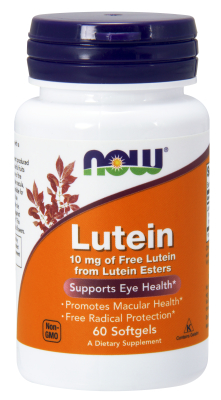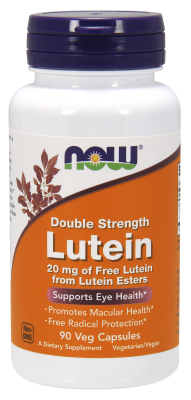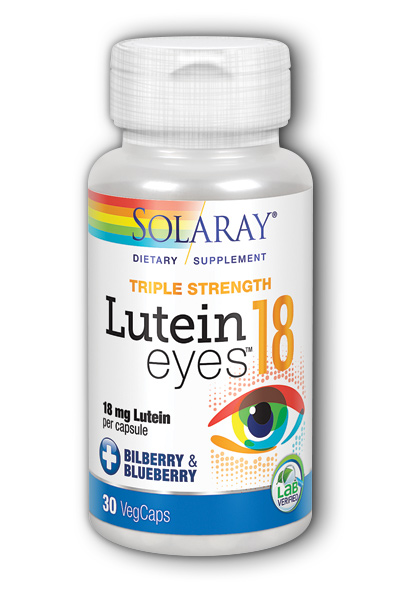- UPC: 753950001923
- # DRB-00192
Best Lutein FloraGLOSupplement Facts:
Serving size 1 softgel lutein (floraGlo)............20mg Zeaxanthin...................1mg other ingredients: Corn oil, softgel capsule (gelatin, glycerin), yellow bees wax, soy lecithin. suggested adult use: one softgel daily with food, or as directed by a health care professional. Lutein is a yellow member of the carotenoid family. It is one of the major carotenoids found in human blood, with a high tissue concentration in the retina (and macula) of the human eye. Lutein functions as a potent free radical scavenger in a number of tissues, including the eyes, skin, heart and lungs. * Zeaxanthin is the second major carotenoid found in the retina. Both lutein and zeaxanthin work synergistically to promote eye health.*
FloraGLO® Lutein is a source of purified free lutein, identical to that found in green leafy vegetables. FloraGLO® Lutein is extracted from marigold flowers, the most abundant source of lutein in nature. This patented process (US patents 5,382,714 and 5,648,564) ensures a standardized, potent and pure end product every time. Much of the published research on lutein has used FloraGLO® Lutein, which has created an extensive body of literature supporting the efficacy and safety of this product in human and animal models. Additionally, in vitro studies have pointed to multiple mechanisms by which FloraGLO® lutein confers benefit to eye, skin and general health. FloraGLO® has also been used in more clinical trials than any other source of lutein, ensuring that the benefits found in these trials can be attributed specifically to FloraGLO® Lutein.
Maintains Healthy Visual Function*
It has been well established that lutein is present in high concentrations in the retinal tissue of the human eye. However, a study was conducted in human volunteers to determine whether taking lutein in supplement form actually increased the density of the carotenoid pigments present in the macula. In this study of eight individuals, researchers estimated the density of the macular pigments prior to having each individual take 10 mg of lutein daily in supplement form for 12 weeks. Plasma lutein concentrations were measured at 4-week intervals. During the first four weeks of the study, plasma levels increased five-fold from pre-supplement measures, and then remained at this level for the duration of the study. It was also shown that, due to increased deposition of lutein in optical tissues, macular pigment density increased by an average of 5.3% at the 4-week mark, and continued to increase until the duration of the study.1
A study was also conducted to investigate the possible role of specific nutrients in protecting the lens of the eye against aging, a risk factor for compromised visual function. The study was comprised of 376 individuals aged from 18 to 75. Of the nutrients measured, it was found that the lenses of individuals with higher concentrations of lutein and zeaxanthin showed less of an effect from the aging process. The investigators concluded that these carotenoids might play a protective role in supporting the maintenance of healthy vision.2
The Age-Related Eye Disease Study (AREDS) was a landmark study of the effects of diet and antioxidant supplementation on eye health. The study enrolled over 3500 subjects aged 55 to 80 years who were followed for approximately 6 years. Among the data collected in this multi-faceted study was a self-administered Food Frequency Questionnaire (FFQ). The AREDS Report No. 22 examined the data from the FFQs and determined that, of the nutrients evaluated, only lutein and zeaxanthin were directly related to maintaining eye health with statistical significance3. These findings corroborated similar results of an earlier multi-center study published in the Journal of the American Medical Association that also found that those with a higher intake of lutein and zeaxanthin maintained healthier eye function.4 These promising results have spurred the design of a second major clinical trial (AREDS2), which is currently enrolling participants to study the impact of supplemental xanthophylls (FloraGLO® Lutein and zeaxanthin) and other nutrients on age-related eye health.5
In addition, a double-blind placebo controlled trial was performed in ninety individuals who had signs of compromised visual function. Individuals were divided into three groups and received either 10 mg FloraGLO® lutein, 10 mg FloraGLO® lutein plus a multivitamin/multimineral formulation, or placebo for 12 months. In both the FloraGLO® lutein and FloraGLO® lutein plus other nutrients groups, improvements were seen in mean eye macular pigment optical density, visual acuity and contrast sensitivity. No improvements were noted in the placebo group.6 These results demonstrate FloraGLO® lutein’s beneficial effect on maintaining healthy visual function.
Newly published research has demonstrated that lutein and zeaxanthin supplementation may enhance visual performance under glare conditions. Forty healthy subjects took daily doses of 10 mg FloraGLO® Lutein plus 2 mg zeaxanthin for six months. They were evaluated for changes in macular pigment, glare disability and photostress recovery at the onset of the study, and at 1, 2, 4 and six months. After six months, subjects experienced an average increase in macular pigment optical density (MPOD) of 39% compared to baseline, and all but two participants experienced some increase in MPOD. This increase in MPOD was also directly related to measured improvements in visual performance after exposure to bright light, as well as photostress recovery.7 This study suggests another way in which lutein and zeaxanthin can help support optimal visual function in healthy individuals.
Potent Antioxidant Protection*
Most of the beneficial effects of lutein are ascribed to its potent free radical scavenging abilities. It is well-known that lutein is a carotenoid related to beta-carotene and possesses antioxidant activity against a number of reactive oxygen species.8
More direct evidence for the free radical scavenging activity of lutein is found in studies of its effects on human lens epithelial cells. Cell cultures were exposed to ultraviolet light after pretreatment with lutein or alpha-tocopherol. Both nutrients were found to reduce ultraviolet-induced damage to lens epithelial cells. However, lutein was shown to have significantly higher photoprotective activity than alpha-tocopherol9 demonstrating its potential as a high-powered antioxidant.
A further review of the mechanisms of lutein in conferring a protective role reveals evidence for its antioxidant activity in various body tissues. Lutein has been shown to be an effective antioxidant in vitro as well as in experimental models of a number of body systems.10
Supports Healthy Skin*
A recent randomized, double blind, placebo-controlled study has demonstrated the positive effects of oral and topical administration of lutein on skin health parameters (surface lipids, hydration, photoprotective activity, skin elasticity and skin lipid peroxidation). Forty female subjects were divided into four treatment groups. Treatment options included oral administration of 5 mg of FloraGLO® Lutein twice daily or placebo and topical administration of 50 ppm FloraGLO® Lutein twice daily or placebo. Each treatment group received either an active oral treatment with a placebo topical treatment, a placebo oral treatment with an active topical treatment, both active treatments, or both placebo treatments. Statistically significant improvements were seen in all five parameters tested in all treatment groups compared to the group receiving only placebos. The greatest overall improvements were seen in the group receiving both active oral and topical treatments, while lesser but still significant improvement was seen in both the active oral only and the active topical only groups. Additionally, oral administration of lutein conferred superior photoprotective activity (as measured by skin surface redness after exposure to ultraviolet light) and prevention of lipid peroxidation (as indicated by levels of malondialdehyde in skin lipids after exposure to ultraviolet light) than either topical lutein or placebo.11
Diverse Cinical Benefits*
Evidence from various experimental trials suggests that lutein may play a protective role on the circulatory and cardiovascular systems. Its antioxidant activity may also extend to the heart, skin, lungs and blood vessels, making it a nutrient with diverse clinical benefits. Lutein possesses the ability to promote the health of many body tissues.12 Safety Suggested Adult Use: One softgel daily with food, or as directed by a health care professional. Does Not Contain: milk, egg, wheat, sugar, sweeteners, starch, salt, or preservatives. Scientific References 1. Berendschot TT, et al. Influence of lutein supplementation on macular pigment, assessed with two objective techniques. Invest Opthalmol Vis Sci. 2000 Oct; 41(11): 3322-6.
2. Berendschot TT, et al. Lens aging in relation to nutritional determinants and possible risk factors for age-related cataract. Arch Opthalmol. 2002 Dec; 120(12): 1732-7.
3. Age-Related Eye Disease Study Research Group. The relationship of dietary carotenoid and vitamin A, E, and C intake with age-related macular degeneration in a case-control study: AREDS Report No. 22. Arch Ophthalmol. 2007 Sep; 125(9): 1225-32.
4. Seddon JM, et al. Dietary Carotenoids, Vitamins A, C, and E, and Advanced Age-Related Macular Degeneration. JAMA. 1994 Nov; 272(18):1413-1420.
5. http://www.nei.nih.gov/neitrials/viewStudyWeb.aspx?id=120. Clinical Studies Database. Age-Related Eye Disease Study 2 (AREDS2). Last Updated 2/28/2008. Viewed 5/15/2008.
6. Richer S, et al. Double-masked, placebo-controlled, randomized trial of lutein and antioxidant supplementation in the intervention of atrophic age-related macular degeneration: the Veterans LAST study (Lutein Antioxidant Supplementation Trial). Optometry. 2004 Apr; 75(4): 216-230.
7. Stringham JM and Hammond BR. Macular pigment and visual performance under glare conditions. Optom Vis Sci. 2008 Feb; 85(2):82-8.
8. “Lutein and Zeaxanthin”. PDR Health. www.gettingwell.com/drug_info/nmdrugprofiles/nutsupdrugs/lut_0164.shtml
9. Chitchumroonchokchai C, et al. Xanthophylls and alpha-tocopherol decrease UVB-induced lipid peroxidation and stress signaling in human lens epithelial cells. J Nutr. 2004 Dec; 134(12): 3225-32.
10. Krinsky NI. Possible biologic mechanisms for a protective role of xanthophylls. J Nutr. 2002; 132: 540S-542S.
11. Palombo P, et al. Beneficial Long-Term Effects of Combined Oral/Topical Antioxidant Treatment with the Carotenoids Lutein and Zeaxanthin on Human Skin: A Double-Blind, Placebo-Controlled Study. Skin Pharmacol Physiol. 2007; 20: 199-210.
12. Mares-Perlman JA, et al. The body of evidence to support a protective role for lutein and zeaxanthin in delaying chronic disease. Overview. J Nutr. 2002; 132: 518S-524S.
|
Helpful Customer Reviews
Supplemental Information

